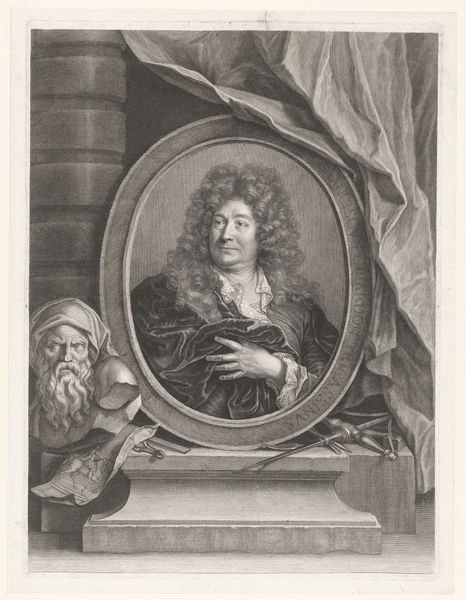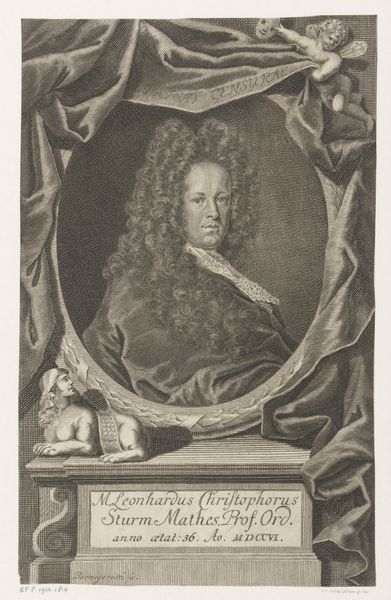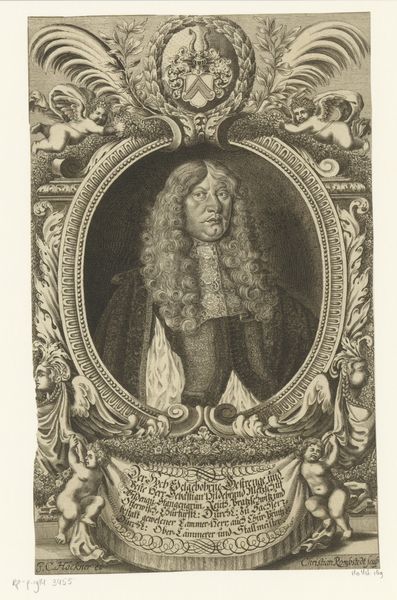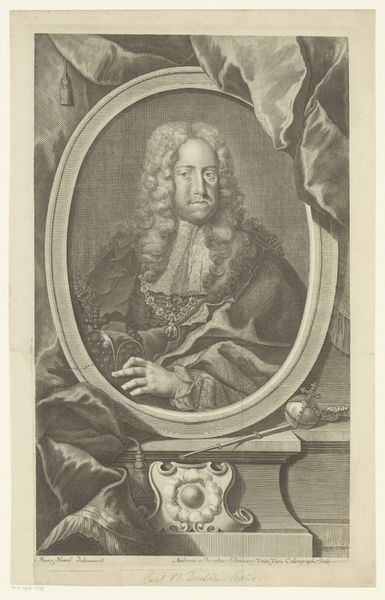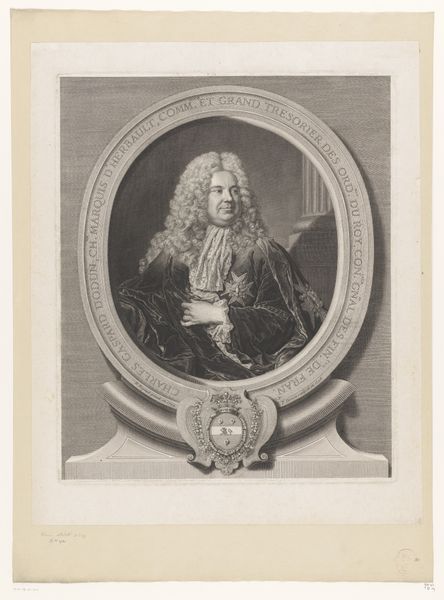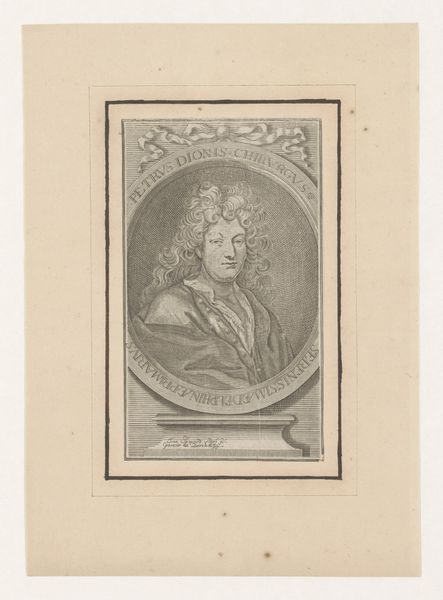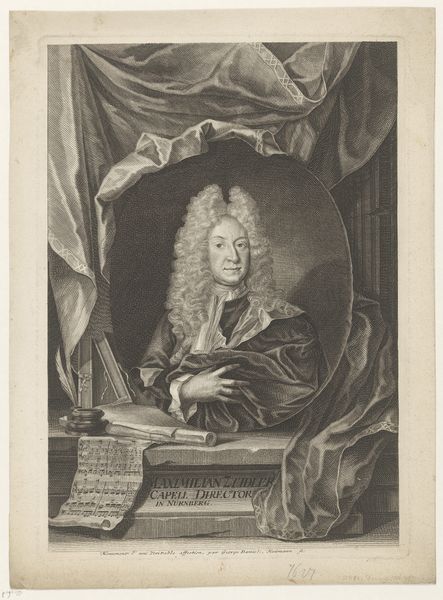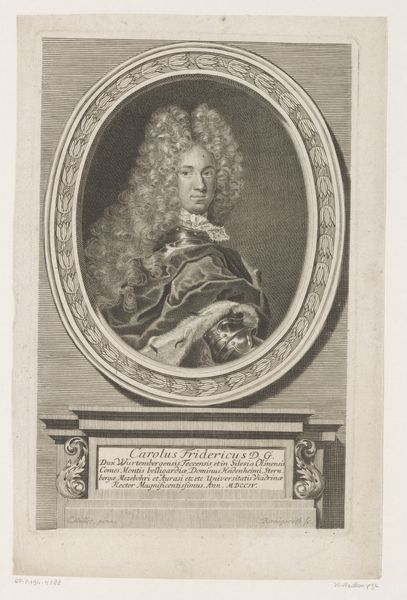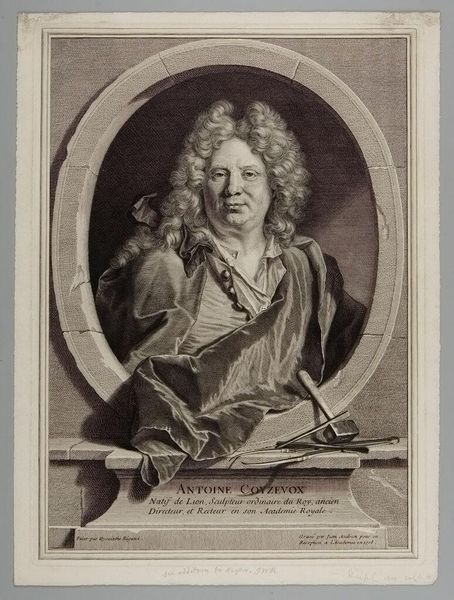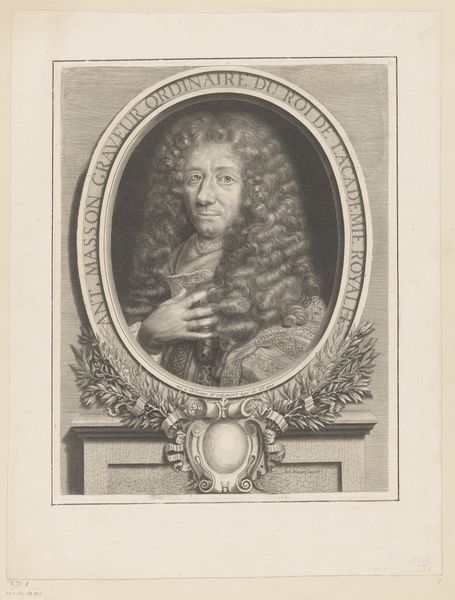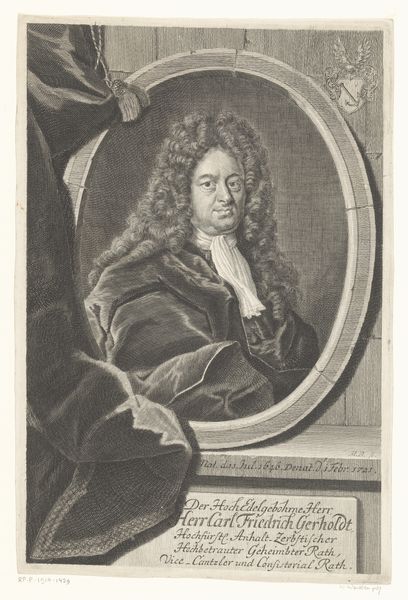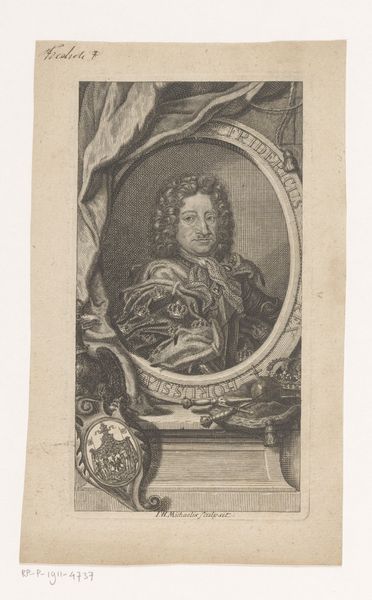
drawing, print, etching, paper, engraving
#
portrait
#
drawing
#
baroque
# print
#
etching
#
paper
#
france
#
19th century
#
engraving
Dimensions: 355 × 305 mm (image); 388 × 328 mm (plate); 455 × 350 mm (sheet)
Copyright: Public Domain
Curator: Good morning. Today, we're looking at a print titled "Molière" by Jacques Firmin Beauvarlet. This piece, undated but likely from the late 18th century, offers a fascinating glimpse into the veneration of cultural figures in France. Editor: It’s certainly striking. My immediate reaction is to the detail – the etching is incredibly fine, creating a surprisingly soft, almost luminous effect. And look at the textural contrast, from the delicate lace at his wrists to the rich folds of fabric in his gown. Curator: Exactly. Beauvarlet was a master engraver. And it’s important to remember that prints like these circulated widely. They shaped public perception and contributed to the construction of Molière's enduring legacy as a national playwright. This wasn't just about artistic skill, but about disseminating an image of French cultural greatness. Editor: Absolutely, and the composition adds to that sense of importance. He’s framed within a frame, creating a sort of proscenium for the portrait itself. The figure below, amidst musical instruments, seems like a personification of drama or art itself, further elevating Molière’s status. Curator: Consider too the performative aspect. The subject’s pose and attire project authority and sophistication. This speaks volumes about the cultural value placed on theatre and the artists who created it during this period. These portraits served a crucial function of reinforcing hierarchies. Editor: Yes, there's an undeniable performativity to it all. Though rendered in monochrome, the engraving manages to suggest such a diverse array of textures, almost convincing us that color exists within it. Notice the confident, steady gaze directly out at the viewer – inviting a conversation. Curator: I think it’s more than just an invitation. The image serves as a form of cultural inscription. The portrait creates a permanent impression of Molière within the national narrative. And that narrative helped establish certain ideas of Frenchness itself. Editor: I concede. Considering all the elements at play, it’s obvious that a very clear and determined cultural statement is being made. Well, it's always a pleasure finding a point of agreement by exploring different facets of a piece. Curator: Agreed, uncovering the dialogue behind art unveils unexpected layers.
Comments
No comments
Be the first to comment and join the conversation on the ultimate creative platform.
